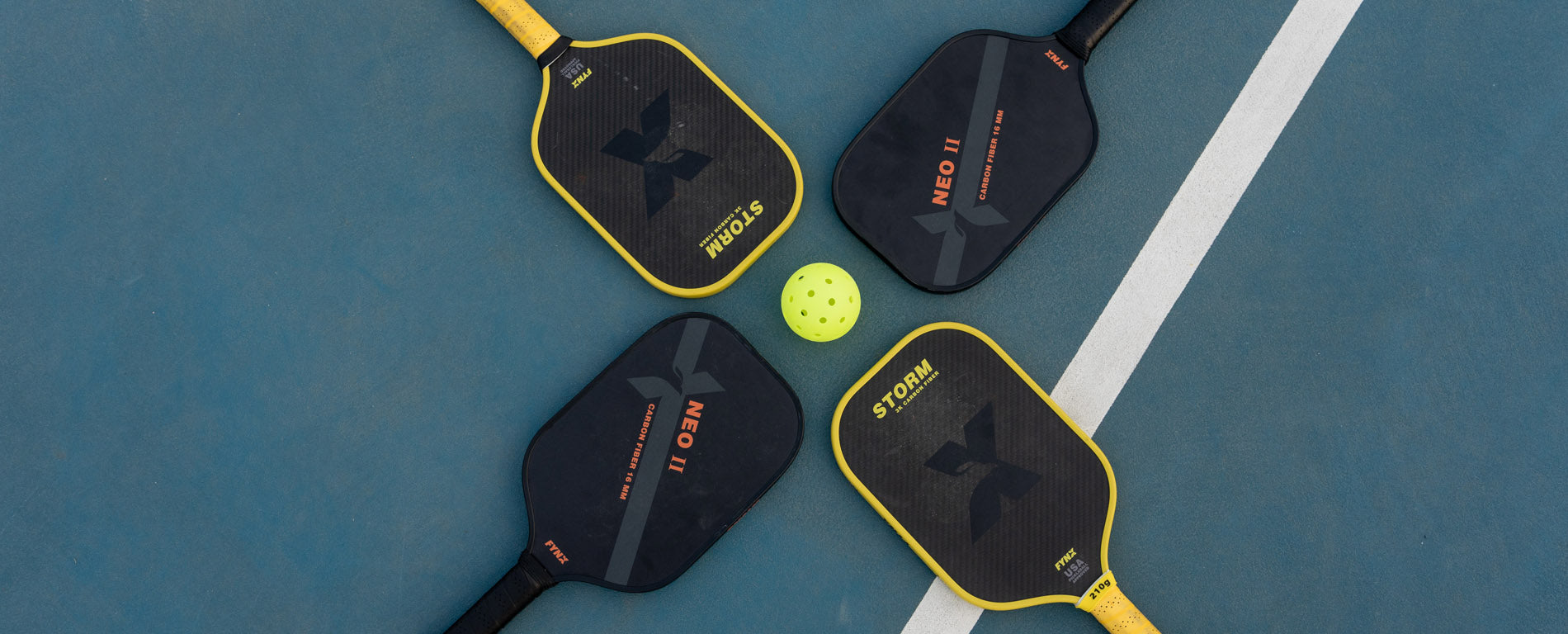
Pickleball Rules
Pickleball is a game of skill, strategy, and quick reflexes. Knowing the rules ensures fair play, longer rallies, and a smoother gameplay experience. Whether you're stepping onto the court for the first time or looking to sharpen your techniques, mastering the fundamentals will give you the edge to dominate the game!
Game Format
Singles or Doubles
- Pickleball can be played as singles (one-on-one) or doubles (two players per team), with doubles being the most common format.
- The same court size and rules apply to both formats.
Determining the First Server
Any fair method, such as a coin toss or number draw, can be used to decide which team serves first.
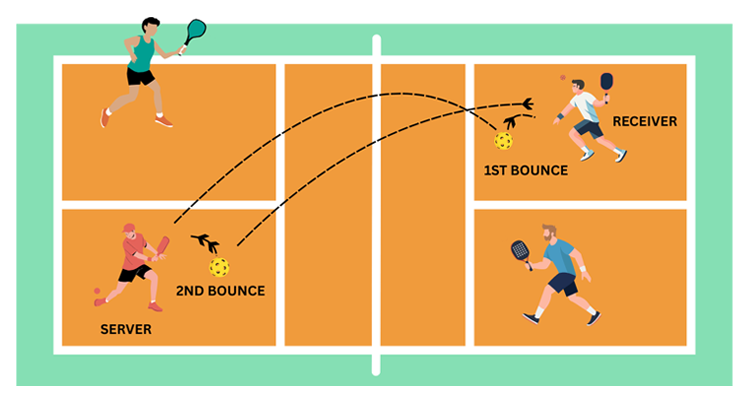
The Serve
Precision & Technique Matter
- The serve must be underhand with the paddle making contact below the waist and the paddle head positioned below the wrist.
- The ball must be served diagonally across the court and land within the designated service box. Both feet must be behind the baseline while serving, and the server cannot step inside the court until after striking the ball.
- A drop serve (where the ball is dropped and then hit) is also allowed, with no restrictions on paddle positioning.
- Only one serve attempt is allowed per player.
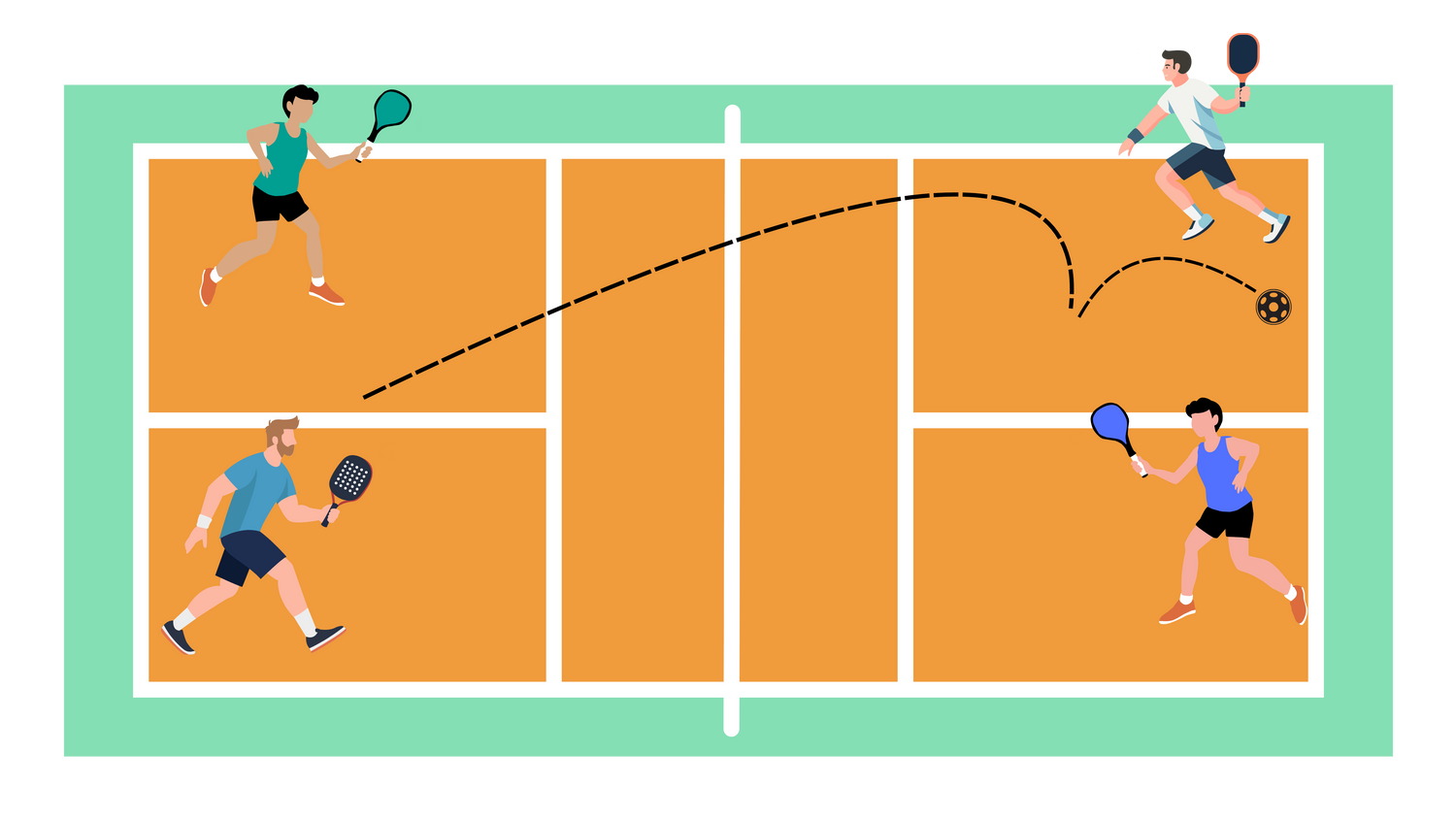
The Service Sequence
Who Serves Next?
- In doubles, both players on the serving team get a chance to serve before the serve switches to the opponent.
- The first serve always begins from the right-hand side of the court.
- After scoring a point, the server switches sides and continues serving until a fault occurs.
- When both players on a team lose their serve, the serve is passed to the other team.
- In singles, the server serves from the right side when their score is even and from the left side when their score is odd.
Scoring
Only the Serving Team Scores
- Traditional pickleball uses a side-out scoring system, meaning only the serving team can earn points.
- Games are typically played to 11 points, win by 2 (or 15/21 points in tournaments).
- The score is called before each serve in the order of server's score – opponent's score – server number (1 or 2 in doubles).
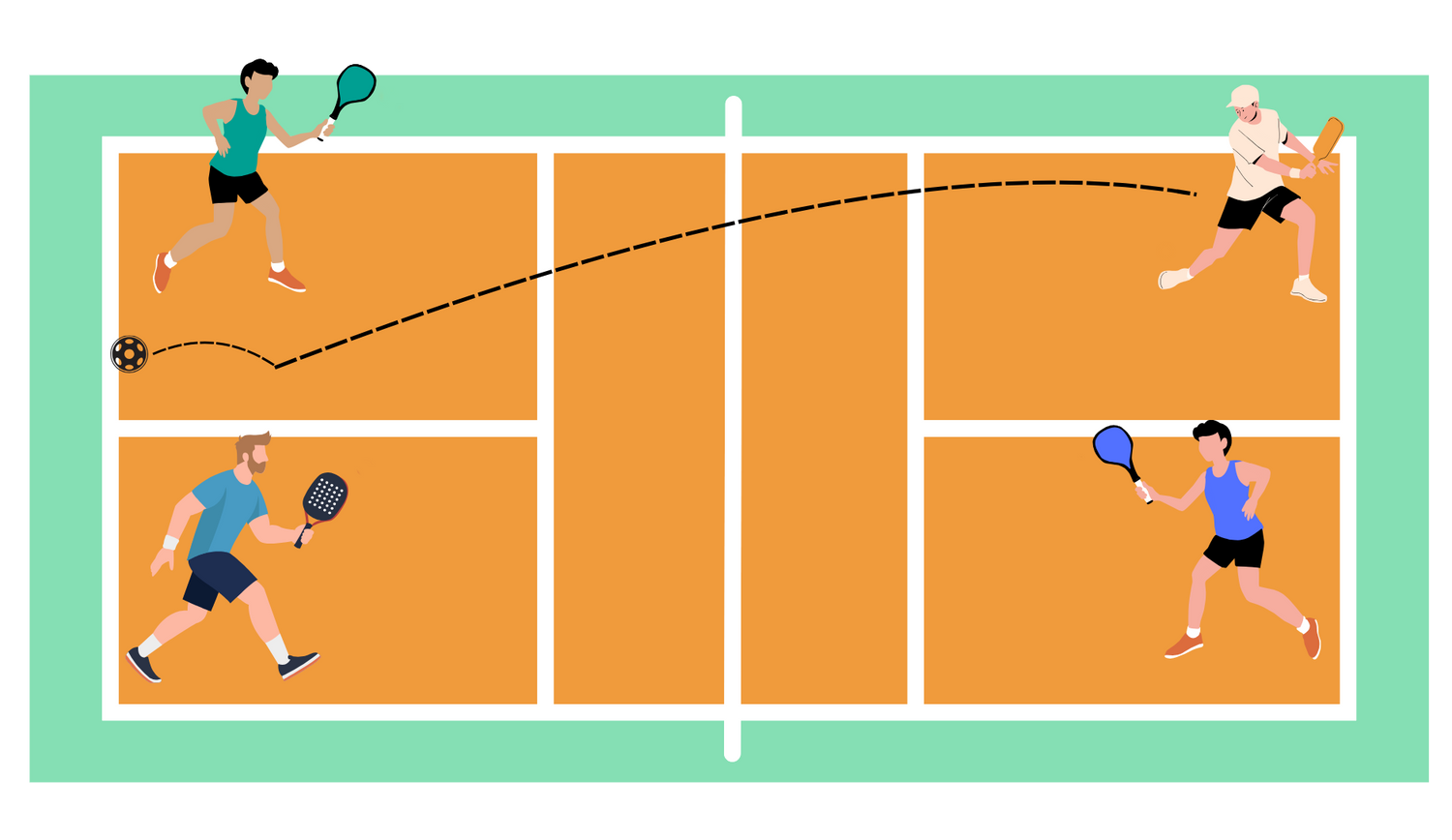
The Two-Bounce Rule
Keeping It Fair
- When the ball is served, the receiving team must let it bounce before returning.
- The serving team must then also let the return bounce before playing the ball.
- After these two required bounces, the ball can be played either in the air (volley) or after bouncing.

The Kitchen Rule
No Volleying in the Non-Volley Zone
- The Non-Volley Zone (NVZ), commonly called "the kitchen," is a 7-foot area on both sides of the net.
- Players cannot volley (hit the ball in the air) while standing in the kitchen or touching the NVZ line.
- If a player volleys and their momentum carries them into the kitchen, it’s a fault.
- Players may enter the NVZ to play a ball only if it has bounced first.
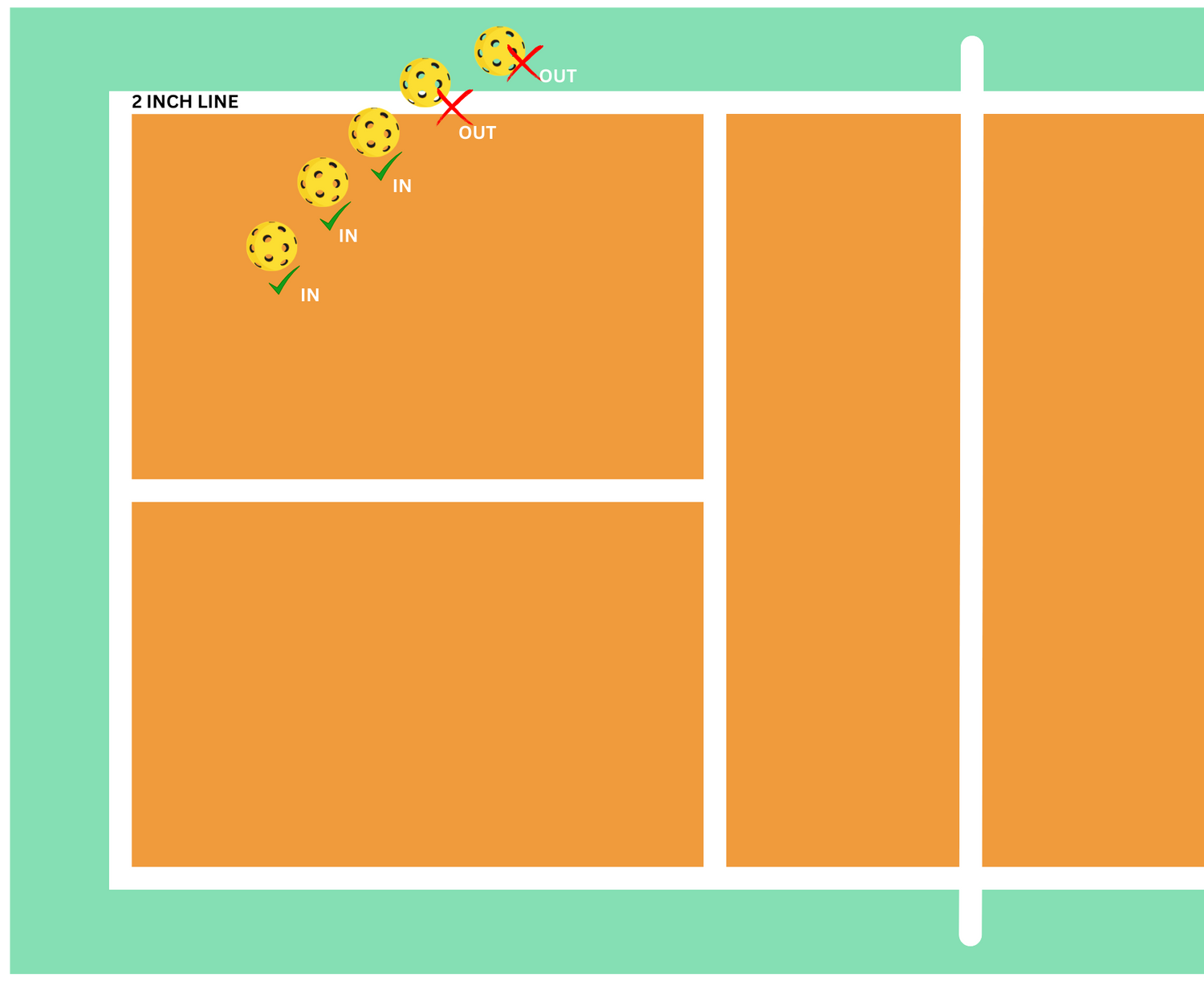
Line Calls
In or Out?
If the ball touches any court line (except the kitchen line on a serve), it is considered in. A serve that lands on the kitchen line is a fault.
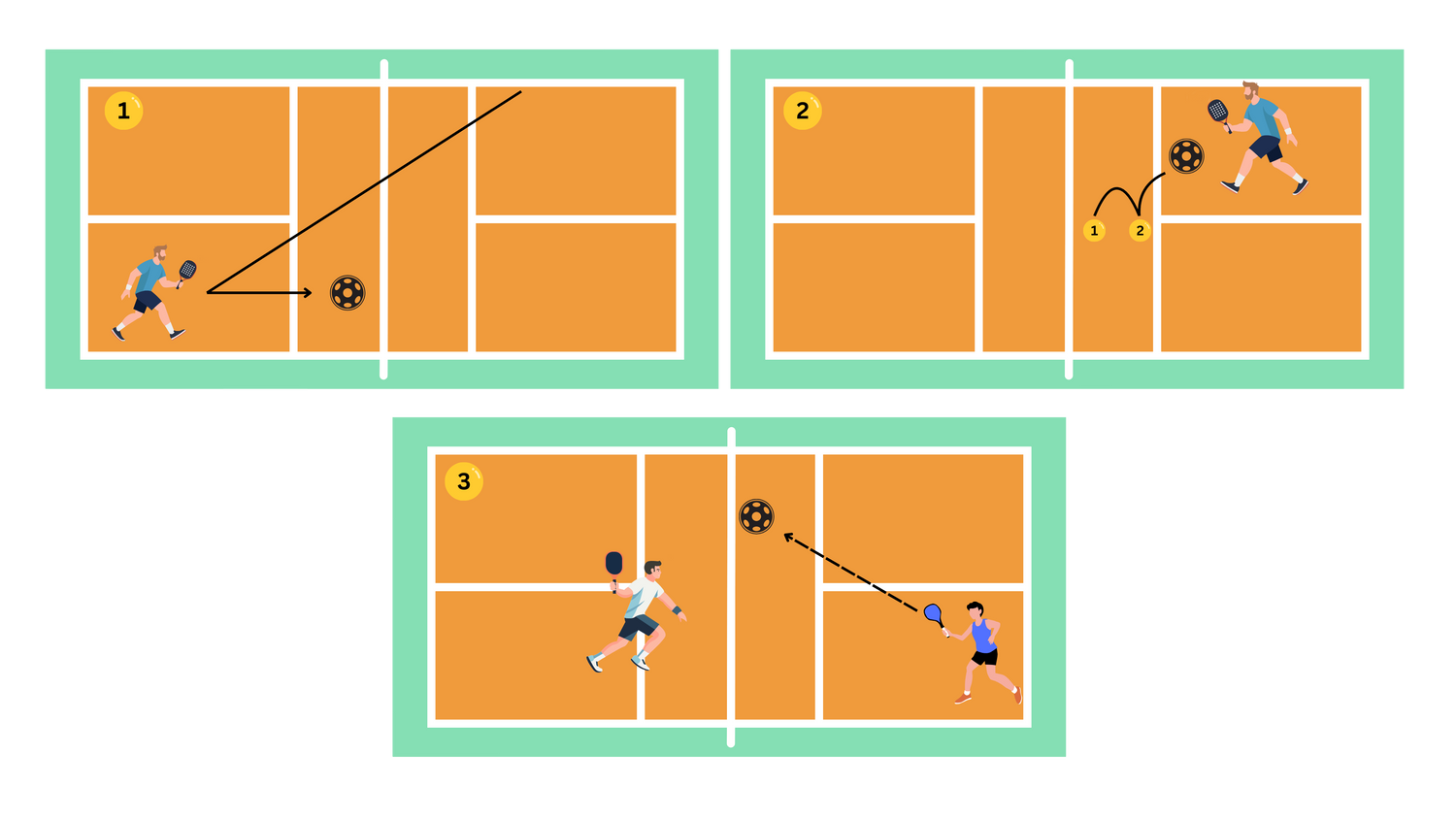
Common Faults
Play Within the Rules
A fault results in a lost rally. Common faults include:
- Serving the ball out of bounds.
- Volleying the ball before it has bounced once on each side.
- Stepping into the kitchen while volleying.
- Hitting the ball into the net.
- Letting the ball bounce twice before returning it.
- Touching the net or net post during play.
- Hitting the ball before it crosses the net to your side.
By following these essential rules, you'll be ready to compete with confidence, rally with skill, and enjoy every game of pickleball!

